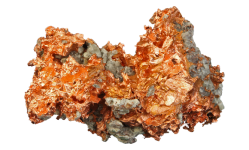Holladayo
New member
Society’s plans for a decarbonized world will rely on renewable energy and transport electrification, which is a copper-intensive strategy. Copper mining activities will struggle to meet this growing demand as new copper deposits discovery rates are lagging, and current operating mines are declining. It is estimated that copper mining supply shortfalls could reach ~ 15 million tonnes by 20341
Meeting this demand for copper and other clean energy minerals, against a backdrop of growing operational/environmental constraints, calls for innovations and the adoption of clean technologies. The mining community, contributing between 4% to 7% of global emissions, has set year 2050 for Net Zero as its target for decarbonization. Meaning that to achieve the 1.5°C climate-change target by 2050, the mining industry will need to reduce direct CO2 emissions to zero.
At Thermo Fisher Scientific, our solutions include high availability samplers, elemental and particle size analyzers, and bulk weighing and mornitoring equipment haped by decades of working with the copper mining industry, this technology enables optimization of mine life and plant feed grade, yield, efficiency, and the profitability of copper mines and concentrators. Ultimately, our technology helps to make clean energy greener.
Decarbonization is not all. However, pressure from investors is growing and the social license to operate is getting harder to negotiate. Copper mines must reduce their environmental footprints and the intensity of water and/or power consumption. Furthermore, the concentration or grade of copper in economically viable deposits is decreasing.
Meeting this demand for copper and other clean energy minerals, against a backdrop of growing operational/environmental constraints, calls for innovations and the adoption of clean technologies. The mining community, contributing between 4% to 7% of global emissions, has set year 2050 for Net Zero as its target for decarbonization. Meaning that to achieve the 1.5°C climate-change target by 2050, the mining industry will need to reduce direct CO2 emissions to zero.
At Thermo Fisher Scientific, our solutions include high availability samplers, elemental and particle size analyzers, and bulk weighing and mornitoring equipment haped by decades of working with the copper mining industry, this technology enables optimization of mine life and plant feed grade, yield, efficiency, and the profitability of copper mines and concentrators. Ultimately, our technology helps to make clean energy greener.
Decarbonization is not all. However, pressure from investors is growing and the social license to operate is getting harder to negotiate. Copper mines must reduce their environmental footprints and the intensity of water and/or power consumption. Furthermore, the concentration or grade of copper in economically viable deposits is decreasing.
